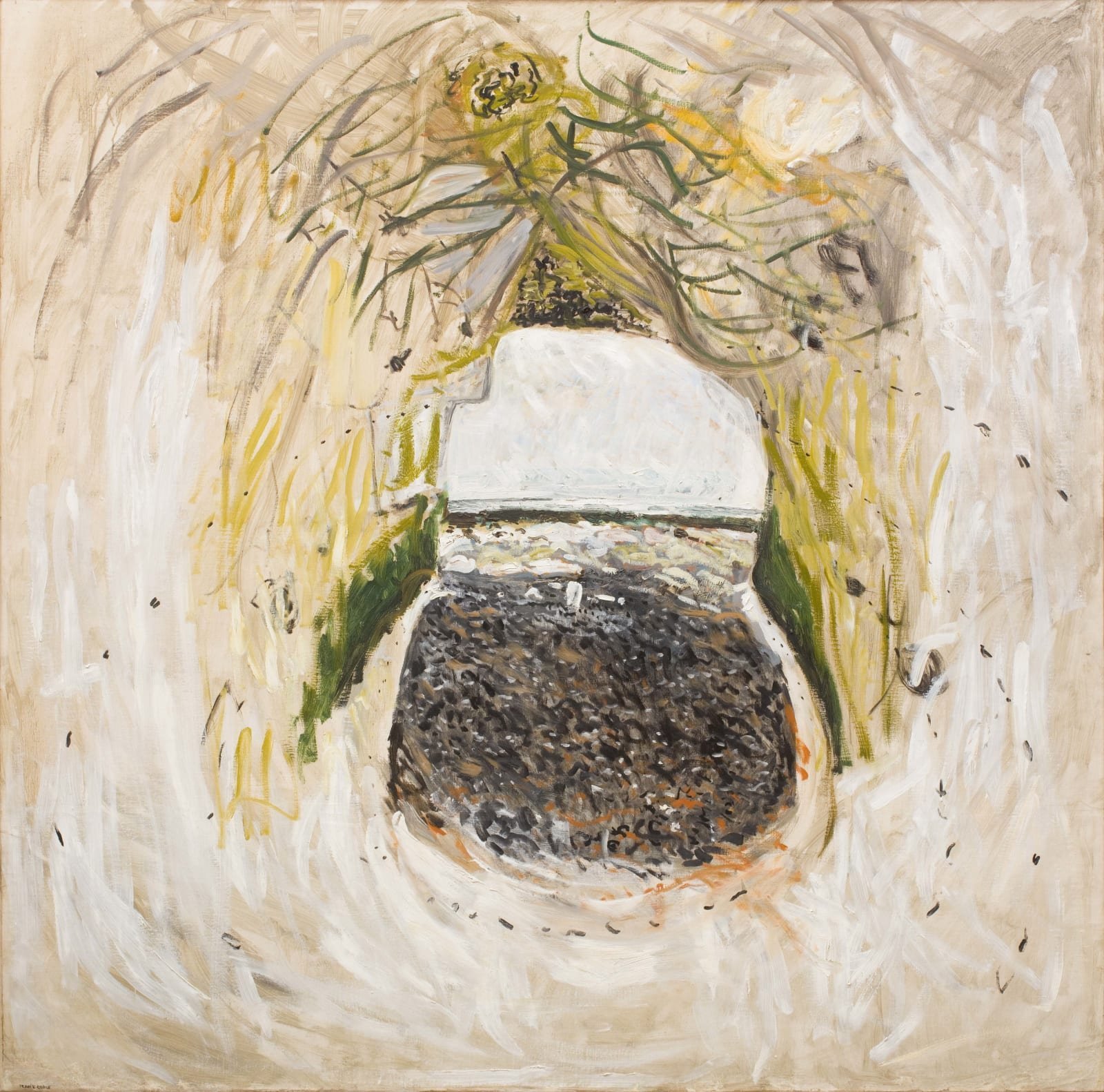JEAN COOKE | WOMAN ON THE EDGE
Jean Cooke, Cave Painting II, 1970, c. Oil on canvas, 152.5 x 149 cm, Copyright the Artist“She looks…”
I’m with Roberta Travers, of Piano Nobile, in front of the haunting self-portrait of Jean Cooke, completed in 1954, which opens the gallery’s new show about the painter, Seascapes and Chalk Caves.
“…Bruised,” says Roberta, completing my sentence. “She looks bruised.”
Unfortunately, that was literally the case. Cooke met the painter John Bratby in 1953, and they married the same year. Bratby was a domineering and abusive husband, who limited the time his wife could spend in her studio to three hours a day, and was in the habit of painting over and slashing her canvases. They were together for twenty years, raising four children.
Cooke had spent a part of her childhood in East Dean, in East Sussex, and grew to love the rugged, cliff-edged coastline there, working as a potter in nearby Seaford, between 1950 and 1953, after which she moved to London to live with Bratby, periodically returning to the area to paint. It is telling that in the year the couple separated (1973, they finally divorced in 1977) she rented a cottage in Birling Gap, right at the edge of the cliff, overlooking the ocean.
So there’s a sense of freedom about this exhibition, displayed over both floors of Piano Nobile’s gallery at 96, Portland Road in Holland Park, exploring her relationship with that shoreline, both before and after her separation with Bratby. And for ‘relationship’, read ‘life-long love affair’. “Everything that happens when I open my eyes [in the morning] is a surprise,” she once stated. “It’s like dying and coming alive again every day.”
The Sussex coast became her muse, and she painted it like no other painter before her, in vivid colours, in an experimental, post-impressionistic style, capturing the daily battle between sea and shore, and mankind’s fragile tenure of a strip of land constantly eroded by the power of nature. In 1995 she was evicted from her cottage, which was ordered to be demolished before it fell into the sea. Her response? She bought the one next door, where she lived until 2008. According to one obituary, by Philip Vann in The Guardian, ‘she died looking out of the window to sea’.
Cliff, Birling Gap, 1994 foretells the looming demise of her first cottage, the crumbling cliffside rendered with impasto blobs of ochre and white. But there’s life in these works, as well as death. Cave Painting II (c1970) on the back wall opposite the entrance to the gallery, takes your eye right through that wall and into the ocean beyond, captured with a few deft brushstrokes. Is it anthropomorphic? Does it represent a view from within the womb, of life outside it? Is it a painting about birth? Or rebirth?
Most poignantly, perhaps, there’s a series of small late works, capturing seaside details – shingle, seaweed, foam – with minimalist verve: Pebbles (c2007) renders the frothy shoreline in three strips of delicate brush-dab. This work has been chosen as the cover for the fine exhibition catalogue.
“She’s hot at the moment,” I comment to Roberta, having completed my tour of the show, clutching said catalogue.
“We represent her, so in our eyes she’s always been hot,” she smiles. But it’s true, she adds: Cooke’s work has been prominently displayed at recent fairs (including the 2022 British Art Fair) and Cave Painting I is currently hanging in Pallant House’s Sussex Landscape show. What’s more, in the Barbican’s 2022 Postwar Modern exhibition, a whole room was dedicated to the work of Cooke and John Bratby. Tellingly, five of Cooke’s paintings were shown alongside just two of Bratby’s, leading the critic Adrian Searle to point out: ‘she was by far the better painter.’ AL
Jean Cooke, Seascapes and Chalk Caves, Piano Nobile, March 2 – May 10
Note to artists: Piano Nobile runs the biennial Ruth Borchard Self-Portrait Prize. The outright winner is awarded with £10,000, and other distinguished entries will be purchased for the collection. Entries for the 2023 edition will be accepted until midnight on March 31. ruthborchard.org.uk

